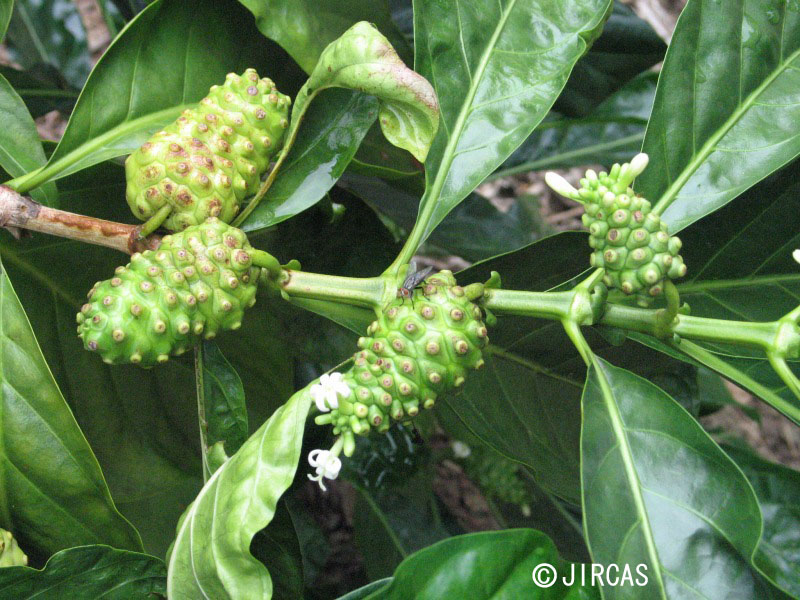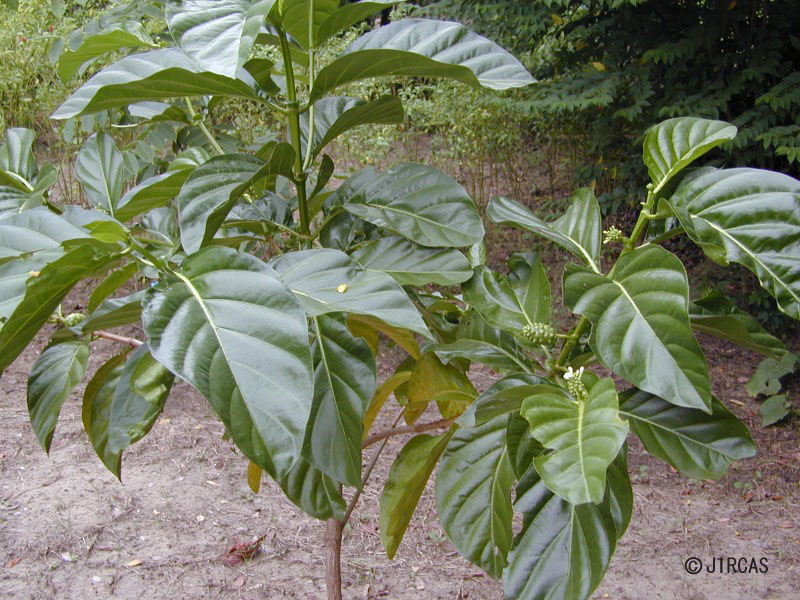Morinda citrifolia L. (Rubiaceae)
- Scientific name
- Morinda citrifolia L.
- Family name
- Rubiaceae
- Common name
- Noni (English); yaeyama aoki (Japanese)
- Local name
- Yor-baan
Evergreen shrub or small, crooked tree with ovoid crown, 3–8(–10) m tall, with deep taproot; bark greyish or yellowish-brown, shallowly fissured, glabrous; branchlets quadrangular. Leaves opposite and simple, elliptic-lanceolate, 15–50 × 5–17 cm, entire, acute to shortly acuminate at apex, cuneate at base, pinnately veined, glabrous; petioles 0.5–2.5 cm long; stipules conspicuous, variable in size and shape, broadly triangular. Inflorescence a globose head, peduncle 1–4 cm long, in axils of stipules opposite normally developed leaves. Flowers 4-merous, bisexual, fragrant. Corolla funnel-shaped, up to 1.5 cm long, white. Stamens inserted on corolla mouth. Ovary inferior; stigma bilobed. Fruit an ovoid syncarp, reddish-brown, with pyramidal, 2-seeded drupes, 3–10 × 2-3 cm, yellow-white. Seeds black.
Grows naturally under a range of conditions from evergreen and (semi-)deciduous forests to more or less xerophytic habitats, often as littoral vegetation. Commonly grown in backyard gardens. Propagated by seed sowing in nursery beds; after germination, seedlings are transplanted at a spacing of c. 1.2 × 1.2 m, in well-tilled soil.
Young leaves and fruits are harvested year-round and cooked in various fish dishes such as ho mok pla chon bai yor (steamed fish curry).
Young leaves and fruits are harvested year-round and cooked in various fish dishes such as ho mok pla chon bai yor (steamed fish curry).





